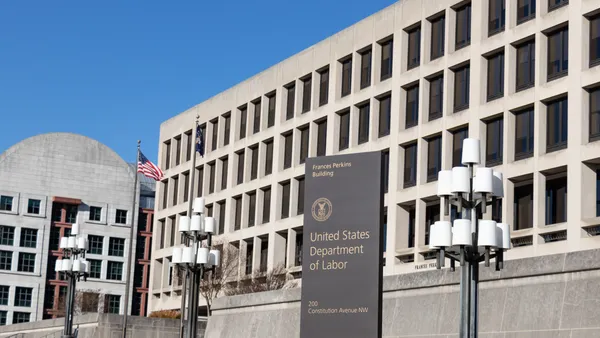Camilo Artiga-Purcell is general counsel at Kiteworks. Views are the author’s own.
The specter of cyber threats looms larger than ever, presenting multifaceted challenges that demand robust and proactive strategies. This evolving digital landscape has firmly positioned cybersecurity as a non-negotiable facet of organizational stewardship. In this milieu, the in-house counsel emerges as a pivotal figure, not only as a legal advisor but also as a guardian of the organization’s digital sanctity. Their unique position enables them to forge the nexus between legal expertise and cybersecurity acumen, serving to safeguard an organization’s data integrity and uphold its reputation.
As they navigate this complex domain, in-house counsel must discern the intricate web of threats, comprehend their potential impact, identify and classify sensitive content that is transferred and stored, and champion a culture of security that is both resilient and responsive, aligning legal proficiency with technical vigilance.
Understanding the threat landscape
The digital landscape is a dynamic and perilous environment where threats evolve with alarming speed and ingenuity. In-house counsel must be cognizant of several prevalent cyber threats. Data breaches, instances where sensitive data is accessed or disclosed without authorization, can have catastrophic consequences for any organization. For example, Kiteworks’ latest Sensitive Content Communications Privacy and Compliance Risk Report found that nearly three-quarters of organizations indicate their measurement and management of security and compliance risks for sensitive content communications such as email, file sharing and collaboration, managed file transfer, and SFTP require improvement.

The aftermath of an inadvertent data disclosure or successful cyberattack can be severe and far-reaching. Financial losses not only stem from immediate fraud or theft but also from the significant costs associated with system restoration, legal fees, and potential fines. The reputational damage inflicted can erode customer trust, a cornerstone of corporate success, leading to lost business and a devalued brand. Legally, organizations face stringent regulatory consequences post-breach, including substantial penalties under frameworks such as GDPR, HIPAA, CCPA, and a host of other regulations, for failing to protect sensitive data — PII, PHI, IP, financial documents, and more. With 90% of organizations exchanging sensitive content with thousands of third parties, this creates an imperative for in-house counsel to understand the nuances of the threat landscape and the profound implications data leakage can impose on the organization’s fiscal health, reputation, and legal standing.
Developing a cybersecurity strategy
Crafting a comprehensive cybersecurity strategy is an intricate endeavor central to the in-house counsel’s mandate. At the strategy’s core is a thorough risk assessment — an analytical process to identify critical information assets and detect systemic vulnerabilities. This process involves mapping digital assets across the organization’s operations and assessing them against potential cyber threats. The likelihood and impact of these threats are scrutinized, enabling the prioritization of risks and the allocation of resources to address them efficiently.
With sensitive content increasingly the target of cyberattacks, organizations must employ content-defined zero trust, which applies granular access controls, encryption, and monitoring at the content level to ensure that only authorized users can access sensitive information, regardless of where it resides or how it is accessed. Next-generation digital rights management, which includes comprehensive access controls and governance, ensures that only authorized individuals — internal staff to external third parties — have access to sensitive systems and information. Hardened security capabilities serve as a critical bulwark, shielding data at rest and in transit, while comprehensive data protection measures guard against unauthorized access and data leakage. In this vein, sensitive data should reside within a single-tenant environment to obviate infiltration risks attendant to multitenant SaaS environments.
Concomitantly, establishing a resilient incident response plan is paramount. This entails clearly defining roles and responsibilities to ensure a swift and organized response to security incidents. Steps for containment, eradication, and recovery must be outlined meticulously, and the response team must regularly engage in tabletop exercises and simulations to hone their skills and ensure readiness. In addition to intracompany preparedness, before a data incident, in-house counsel should develop commercial relationships with data breach litigators and forensic consultants. This achieves the dual goals of swift response times during and after a data incident, as well as predicable costs. This strategy of assessment, control implementation, and incident response forms the bedrock upon which a robust cybersecurity posture is built.
Embracing legal considerations
In the realm of in-house legal counsel, the adage “knowledge is power” translates into “compliance is key.” Counsel must navigate a complex web of cybersecurity laws and regulations that have significant implications for an organization’s practices. This necessitates a comprehensive understanding of industry-specific regulations such as HIPAA for healthcare entities, GLBA for financial services, GxP for manufacturers, and FERPA for educational institutions, which mandate stringent protections for personal data. Global and regional data privacy laws like the GDPR and CCPA impose additional layers of obligation regarding the collection, storage, and processing of personal information.
Protecting sensitive communications is critical — whether through email, file sharing, managed file transfer, or SFTP; each modality must be secured with robust encryption and monitored diligently to prevent unauthorized access. Contractual obligations extend to third-party risk management; due diligence must be exercised in reviewing vendor contracts and ensuring that service level agreements uphold the same standards of cybersecurity. This includes scrutinizing their security practices to ensure compliance and mitigate risks.
Finally, in-house counsel must assess an organization’s exposure to cyber risks and consider the role of cyber insurance as a risk transfer strategy. It is vital to evaluate coverage options, understand policy terms, and determine how insurance can be integrated into the overall risk management framework. This comprehensive approach to legal considerations and compliance not only ensures adherence to regulations but also fortifies the organization’s resilience against cyber threats.
Protecting communications
In the orchestration of an organization’s cybersecurity framework, the in-house counsel’s role transcends the legal sphere, becoming a linchpin in unifying, tracking, controlling, and securing sensitive content communications across the operational tapestry. Collaborative synergy with IT and other departments is essential to ensure that cybersecurity measures seamlessly permeate all vectors of communication. The in-house counsel must advocate for integrated solutions that provide comprehensive oversight over sensitive data across communication channels.
Articulating the critical nature of secure communications, in-house counsel should be involved in conversations with the board and senior management, presenting clear reports that not only outline potential risks and vulnerabilities but also track the flow and security of sensitive information. Engagement extends beyond the internal mechanisms; in-house counsel should actively participate in dialogues with external entities such as law enforcement, regulatory bodies, and industry groups. This dual approach ensures adherence to legal requirements while leveraging collective intelligence to fortify security measures. These principles are paramount in safeguarding an organization’s sensitive data against the inexorably evolving cyber threats.
At the Forefront
It is imperative that general counsel proactively incorporate a risk-based approach to cybersecurity, prioritizing the safeguarding of sensitive content communications. This call to action is not merely about adherence to regulations but about championing a culture of vigilance that permeates every level of the organization, ensuring that data protection is not an afterthought but a foundational business principle.










